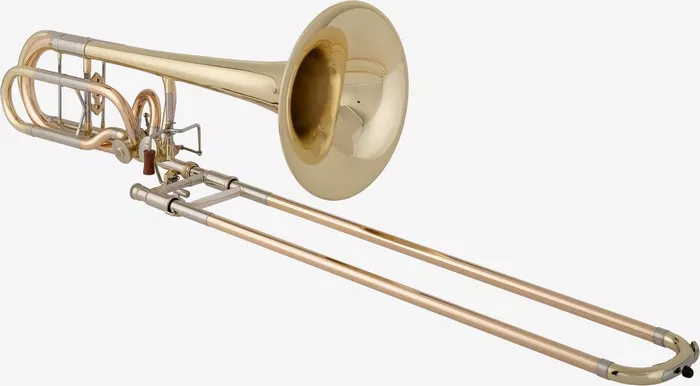The trombone, a brass instrument with a sliding mechanism, holds a unique position in the realm of music. Its distinctive sound and versatility make it a valuable asset in various musical genres, from classical to jazz to contemporary. However, mastering the trombone is no easy feat. It requires a combination of physical dexterity, mental acuity, and musical intuition. Understanding the intricacies of this instrument is crucial to appreciating why it presents such a challenge to aspiring musicians.
Understanding the Trombone
To comprehend the challenges of playing the trombone, one must first grasp its mechanics and anatomy. Unlike many other instruments, the trombone does not have fixed pitches controlled by valves or keys. Instead, it relies on a telescoping slide to change the length of the tubing, altering the instrument’s pitch. This unique feature offers players unparalleled control over intonation and expression but demands exceptional precision and coordination.
The trombone consists of several main parts: the mouthpiece, the slide, the bell, and various tuning slides. The mouthpiece is where the player’s embouchure—a combination of lip tension, air pressure, and tongue placement—produces sound. The slide, comprising an inner and outer tube, extends and contracts to change the instrument’s pitch. Mastery of the slide’s movement is crucial for accurate intonation and smooth transitions between notes. The bell amplifies and shapes the sound, while tuning slides allow players to adjust the overall pitch and resonance of the instrument.
Why it is Hard to Play the Trombone?
Despite its seemingly straightforward design, playing the trombone presents several significant challenges to musicians of all levels. One of the most formidable obstacles is achieving and maintaining proper embouchure. Unlike instruments with fixed mouthpieces, such as the trumpet or French horn, the trombone requires players to exert precise control over their lip muscles to produce clear, resonant tones. Developing a strong embouchure takes time, patience, and diligent practice.
Another challenge lies in mastering the slide technique. Unlike the fingerings of valve instruments, which offer discrete pitches, the trombone’s slide allows for continuous variation in pitch. This freedom offers unparalleled expressive possibilities but demands exceptional coordination and accuracy from the player. Executing rapid slide movements while maintaining pitch and tone quality is a skill that can only be honed through dedicated practice and careful attention to detail.
Intonation, or the accuracy of pitch, is another area where trombone players face considerable challenges. Because the instrument lacks fixed pitches like those of valve instruments, players must rely on their ears and muscle memory to produce accurate intonation. Factors such as slide position, air support, and embouchure all influence intonation, making it a complex and multifaceted aspect of trombone playing. Achieving consistent intonation across different registers and dynamic levels requires keen listening skills and meticulous practice.
Advice for Playing the Trombone
While mastering the trombone may seem like a daunting task, with dedication, perseverance, and the right approach, aspiring musicians can overcome its challenges and unlock their full potential. Here are some practical tips and advice for playing the trombone:
Develop Strong Fundamentals: Building a solid foundation is essential for success on the trombone. Focus on developing proper embouchure, breath support, and posture from the outset. Regular exercises to strengthen lip muscles and improve breath control will pay dividends in the long run.
Practice Efficiently and Consistently: Effective practice is key to progress on the trombone. Set aside dedicated time each day for focused practice sessions, and prioritize areas of weakness or difficulty. Break down challenging passages into smaller segments and work on them systematically to achieve mastery.
Focus on Tone Quality: Strive for a rich, resonant tone on the trombone. Experiment with different mouthpiece placements, air speeds, and tongue positions to find the optimal sound for each note and phrase. Record yourself regularly to assess tone quality and make adjustments as needed.
Master Slide Technique: Develop fluid and precise slide technique through targeted exercises and etudes. Practice scales, arpeggios, and chromatic exercises in various keys and positions to improve slide dexterity and intonation. Focus on smooth, seamless transitions between notes to eliminate unwanted glissandi or blips in pitch.
Ear Training and Intonation: Train your ears to recognize and correct intonation issues on the trombone. Practice playing in tune with a tuner or piano, focusing on matching pitches and adjusting slide positions as needed. Develop a keen sense of relative pitch to navigate different keys and intervals accurately.
Seek Guidance and Feedback: Take advantage of resources such as private lessons, masterclasses, and online tutorials to improve your trombone playing. A knowledgeable teacher or mentor can offer personalized guidance, feedback, and encouragement to help you reach your musical goals.
Stay Patient and Persistent: Learning the trombone is a journey that requires time, patience, and persistence. Embrace challenges as opportunities for growth and improvement, and celebrate small victories along the way. Stay motivated and focused on your long-term goals, and don’t be afraid to ask for help when needed.
By approaching the trombone with dedication, discipline, and a passion for music, aspiring musicians can overcome its challenges and unlock their full potential on this unique and versatile instrument. With consistent practice, guidance from experienced mentors, and a commitment to excellence, playing the trombone can be a rewarding and fulfilling pursuit that yields both artistic and personal growth.
Conclusion
In conclusion, while playing the trombone may present formidable challenges, with dedication, perseverance, and the right approach, aspiring musicians can overcome these obstacles and achieve mastery on this distinctive and beloved instrument. By understanding the mechanics and anatomy of the trombone, acknowledging its inherent difficulties, and following practical advice for playing and practicing, trombonists can unleash their creativity and musical expression to captivate audiences and leave a lasting legacy in the world of music.


